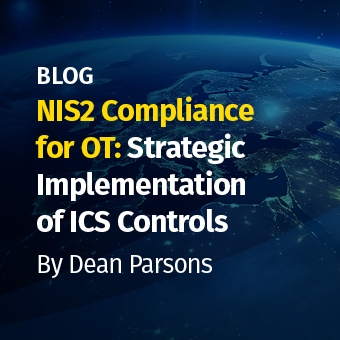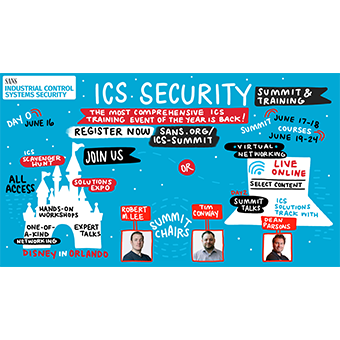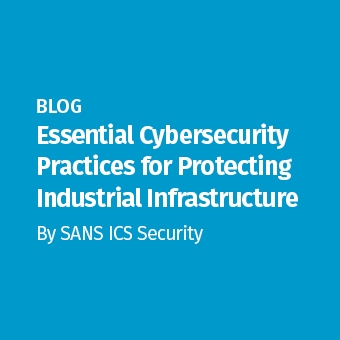FireEye uncovered a new piece of ICS malware that they released today and their way of approaching it both to the public and in pre-briefing to the media has been outstanding. The malware is not in the wild, is not a threat to the industry, but offers lessons learned and I believe the FireEye/Mandiant team's handling of it deserves a good nod. This blog post will explain the background context to the malware, the details of the malware with my thoughts, and why it is important.
Background
On April 25th I noticed the S4 European agenda noted that Rob Caldwell of the Mandiant ICS team would be doing a presentation on new ICS malware. I posted the blog here with some thoughts on what this meant for the community. Personally, I'm excited about DigitalBond's inaugural ICS conference in Europe (the long running S4 in the US and Japan has always been a valued contribution to the larger community). I will offer one small critique though that is not meant to be negative in tone. The DigitalBond website lists that the malware is in the "wild"; the ICS malware that Mandiant released details about this morning, titled IRONGATE, is not in the wild, in my opinion. "In the wild" does not have a strict definition so I don't think DigitalBond did anything wrong here, they were being extremely good stewards of the community to bring this information forward but when I consider malware "in the wild" I look for something actively infecting organizations. I was fortunate enough to exchange messages with Dale Peterson, who runs DigitalBond, and his understanding of the importance of the malware while avoiding hype matched my own. Shortly stated, he is spot on with his approach and I'm looking forward to the presentation on the malware at his conference. It is important to keep in mind though that this malware is more of a proof-of-concept or a security research project but still important. I will cover these details in the next section though.
After posting my blog I was able to get some insight into the malware from the Mandiant team under an embargo. I normally wouldn't talk openly about the "behind the scenes" discussions but I want to call attention to this for a very heartfelt kudos to the Mandiant ICS team. I'm not a journalist and in no way could help the FireEye/Mandiant public relations (PR) effort with regards to the malware they were releasing. Like it or not this kind of PR has value to companies and so capitalizing on it is a big motivation to any company. But they wanted to run their analysis by me for outside critique. This is a lesson many companies would benefit from: no matter how expert your staff is it is always valuable to get an outside opinion to ensure you are defeating biases and groupthink. Luckily for both the Mandiant team and myself I was excited about their thoughts. They called attention to why the malware was important but were careful to note that it is not technically advanced, it is not an active threat, and that there should be caution in overhyping the malware itself.
Details on IRONGATE
IRONGATE is the name for a family of malware that the FireEye Labs Advanced Reverse Engineering (FLARE) team identified in late 2015. The malware targets a simulated Siemens control system environment and replicates the type of man-in-the-middle attack seen in Stuxnet. The man-in-the-middle attack allows it to record normal traffic to a PLC and play it back to an HMI. It has a number of decent capabilities like anti-Virtual Machine checks and Dynamic Link Library (DLL) swapping with a malicious DLL. In many ways it looks like a cool project although not technically advanced. The most important aspect of the malware itself is that it shows the interest and understanding of impacting ICS by the authors. The full report by FireEye has a good coverage of the malware. Moving past the technical paper though there are a few key points to extract out about the malware itself. The following is my analysis and should not be considered definitive:
- The malware is the payload portion and not the delivery mechanism; the delivery mechanism has not been identified and likely does not exist. The malware looks to me as a research project, penetration testing tool, or a capability developed to test out a security product for ICS networks. This means it is standalone and I do not believe we will ever see it or a derivative in the wild although we may see the tactic it displayed in a different capability by different authors in the future
- The main portions of the malware are written in Python and Mandiant identified the malware by searching VirusTotal. While the discovery of the malware was in 2015 the malware was submitted through the web interface (not automatically through an API) in Israel in 2014. The combination of a manual upload, the malware not being in the wild (e.g. actively infecting sites), and the tool being written in Python against a simulated environment makes me think that the malware is a penetration testing or security product demo tool and not a proof-of-concept for a capable adversary. Generally speaking, APTs do not normally write tools in Python and submit them to VirusTotal
- The malware's attention to ICS and its focus on mimicking capabilities present in Stuxnet reinforced what many of us in the community knew: ICS is a viable target and attackers are getting smarter on how to impact ICS with ICS specific knowledge sets. The unique nature of ICS offers defenders many advantages in countering adversaries but it is not enough. You cannot rest on the fact that "ICS is unique" or "ICS can be hard to figure out" as a defense mechanism. It is a great vantage point for defenders but must be taken advantage of or adversaries will overcome it.
With what appears to be a bit of downplaying the malware the question remains: is this important and why? The answer is: yes it is important.
Why Is This Important?
I'm personally not a huge fan of naming malware, especially malware not in the wild, so I will admit I'm not crazy about naming this tool "IRONGATE" but this is the state of the industry today and I would expect the same out of any security company. The malware is not in the wild and in my opinion looks more to be a research tool than it does a bearer of things to come. So why is it important? Simply put, we do not know a lot about the ICS specific capabilities and malware in the community. In other words: we do not have much insight into the ICS threat landscape. We often have overhyped and inaccurate numbers of incidents in the community (Dell's 2015 review stating there were hundreds of thousands of ICS cyber attacks) or abysmally low numbers (the ICS-CERT's metrics of ~250 incidents a year which are primarily reported from the intelligence community and not asset owner themselves). Somewhere in between those two numbers is the truth pertaining to how many cyber incidents there are each year in the ICS community. A much smaller portion of those incidents are targeted espionage, theft, or attacks. And yet we only know of three ICS specifically tailored pieces of malware: Stuxnet, HAVEX, and BlackEnergy2. Over focusing on the malware instead of the human threats who intend harm is a mistake. But malware is still the tool of choice for many adversaries. So learning about these tools and the tradecraft of adversaries is extremely important. Yet we are lacking insight into those data sets. This makes the IRONGATE malware more interesting in the ICS community than it would be in an IT security discussion.
Here are, in my opinion, the three most important takeaways from this piece of malware.
- The malware was submitted in 2014 to VirusTotal and no security vendor alerted on it. Against dozens of security products none flagged this as malicious. It was written in Python, had a module titled scada.exe, and was obviously malicious yet no product flagged it. If ICS related malware is sitting in public data sets undiscovered by the vendors who focus entirely on detecting malware then you can be sure that there is malware in ICS environments today that we have not even begun to identify and understand.
- The Mandiant ICS team at FireEye released a number of pieces of technical information such as MD5 hashes and sample names for the pieces of this malware family. Although I disagree in calling them indicators of compromise (IOCs) because nothing was compromised, the technical details are an important exercise. With this information, could a standard ICS organization search through the network traffic and host information for matches against this malware? I would state that the significant majority of the industry could not. That's a serious issue. This is likely researcher malware or a pentesting tool and we as a community could not search community-wide for it. Although I'm a huge advocate of the amazing work being done in the industry today we are simply behind where we need to be. If we cannot search our environments for possible pentester malware we're playing in a different league to find the top capabilities of foreign intelligence teams.
- Nothing displayed in this capability or any capability we have seen to date (Stuxnet, HAVEX, and BlackEnergy2 as well as non-targeted capabilities such as Slammer and Conficker) would be undetectable to a human analyst. We need security products in our environments although we cannot rely solely upon them. Those passive defenses that rule out the Conficker infections and ransomware malware are important to rule out noise that human analysts shouldn't be focusing on. But at the end of the day it must be human defenders against human adversaries that secure the ICS. That active defense approach of monitoring the ICS and responding to real threats is required. Nothing about the capabilities to date would have bypassed human defenders. The harsh truth is many organizations simply are not looking at their ICS networked environment. The harsh truth is that as a community we are not where we need to be today but the inspiring reality is that we can change the industry quickly by countering threats in our environment by empowering and training our people to do so.
In closing, I would caution the community to not overhype IRONGATE. The Mandiant ICS team did not overhype it nor should journalists. It could be a resume generating event to go to your management and claim that the malware itself is a reason for security investments at the company. But this is still an important find. Going to decision makers and ICS organizations and simply asking: "How would you find this if it was in your network?" is an important question and exercise. Hype is not needed to show why this is worth your time to discuss and counter. Ultimately, as we consider this malware and capabilities like it we as a community will move to better understand the threat landscape and counter the capabilities we have not discovered yet. Defense is doable — but you actually have to do something, you cannot just buy a product to place on the network and claim victory.
Robert M. Lee is the course author of ICS515 - Active Defense and Incident Response and the lead author of FOR578 - Cyber Threat Intelligence. He is also the Founder, CEO of Dragos Security and gained his start in cyber security in the U.S. Intelligence Community as an Air Force Cyber Warfare Operations officer. He may be found on Twitter @RobertMLee





